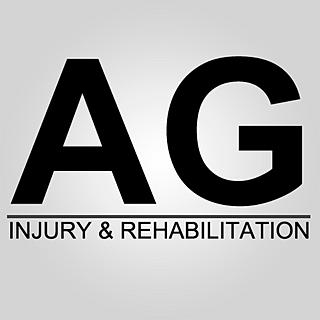What is Scapula Dyskinesis?
- Arun Gray
- Jul 14, 2016
- 2 min read
Scapula dyskinesis is a condition responsible for the alteration of the "normal position" and kinematics of the scapula - simply known as abnormal movement of the shoulder blade(s). This is frequently present in a number of shoulder problems and alters the usual biomechanics at the shoulder and often has a knock on effect in changing posture.

It has been suggested that scapular dyskinesis is present in 68-100% of shoulder injuries (Kibler et al, 2003). One of the 3 types of scapular dyskinesis (see below) are commonly seen in:
- Impingement: the SD present in impingement patients regularly reduces acromial upward rotation and winging
- Rotator cuff injury
- MDI: frequently display altered scapulo-humeral rhythm and rotator cuff activation patterns.
- Labral injury: altered scapular positioning and motion increase stress on the anterior shoulder, and can increase the "peel-back" load on the labrum
- Trauma: clavicular fractures, AC joint injuries etc.

Clinically, dyskinesis can be categorised into 3 types:
Type 1 - Infero-medial scapula boarder prominence
Common in the "cocking position" in overhead sports, often caused by tight anterior shoulder muscles (pectoralis major/minor) and weak lower trapezius/serratus anterior muscles. This "scapula tilt" can lead to a reduction in the subacromial space, causing further issues during abduction/external rotation when the space is compact.
Type 2 - Medial boarder prominence
This position is observed as a "winging", whereby the scapula stands out medially at rest. This is usually caused by a weakness or reduced activation of the lower traps and serratus anterior and fatigue of the scapula stabilisers (trapezius and rhomboids).
Type 3 - Supero-medial boarder prominence
This is displayed as a prominence of the superior boarder, and is often associated with shoulder impingement and rotator cuff injury. Some shoulder shrug may be evident. This may be caused by tightness/overactive upper trapezius and/or weakness/reduced activation of lower trapezius.
S.I.C.K. Scapula
The term S.I.C.K. Scapula was introduced to categorize the scapula position during assessment:
S - Scapula malposition on the rib cage
I - Inferior medial boarder winging from from weak middle and lower trapezius muscles
C - Coracoid pain and malposition from the attachment of a tight pectoralis minor muscle pulling on the coracoid
K - Scapula dyskinesis from alterations in muscle recruitment patterns (kinesis abnormalities)

Assessment
Goals of assessment are to look at:
- Resting position
- Potential causes proximally and distally
- Special tests
Posterior Visual Observations:
- Spinal posture
- Resting position (comparing symmetry)
- Medial, superior, inferior boarder positions/prominence
Lateral Visual Observations:
- Spinal posture
- Protraction/retraction
- Humeral head position
- Presence of dyskinetic patterns







Comments